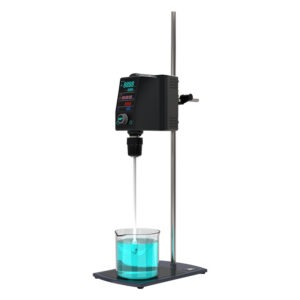
The chemical instrument industry is undergoing a significant digital transformation, reshaping how instruments are designed, operated, and maintained. This shift towards digitalization is driven by advancements in technology, the increasing demand for efficiency, and the need for enhanced data management. This article explores the key aspects of digital transformation in chemical instruments and its implications for the industry.
1. Integration of Software and Hardware
Modern chemical instruments are increasingly being designed with integrated software solutions that enhance functionality and usability. This integration allows for more precise control over experiments, improved data collection, and seamless analysis. For example, software can automatically calibrate instruments, optimize settings for specific experiments, and provide real-time feedback on performance.
The combination of advanced hardware with sophisticated software creates a more intuitive user experience, enabling researchers to focus on their work rather than on managing complex systems.
2. Enhanced Data Management
Digital transformation facilitates better data management in chemical instruments. With the ability to collect and store large volumes of data, laboratories can improve their data analysis capabilities. Cloud-based storage solutions allow for secure access to experimental data from anywhere, promoting collaboration among researchers and teams.
Additionally, advanced data analytics tools enable laboratories to extract valuable insights from their data, improving decision-making and enhancing the reproducibility of experiments.
3. Automation and Robotics
The integration of automation and robotics into chemical instruments is a hallmark of digital transformation. Automated systems can perform repetitive tasks with high precision, reducing the likelihood of human error and freeing up researchers to focus on more complex activities. Robotic liquid handlers, for instance, can conduct multiple assays simultaneously, significantly increasing throughput.
This automation not only enhances efficiency but also reduces the overall time required for experiments, accelerating research and development processes.
4. Cybersecurity and Data Protection
As chemical instruments become more connected and reliant on digital technology, cybersecurity has become a critical concern. Protecting sensitive data from cyber threats is essential for maintaining the integrity of research and ensuring compliance with regulations.
Manufacturers are increasingly implementing robust cybersecurity measures to safeguard their instruments and data management systems. This includes encryption, secure access protocols, and regular updates to protect against vulnerabilities.
5. Future-Proofing through Digital Solutions
Investing in digital solutions enables chemical instrument manufacturers to future-proof their products and operations. As the industry evolves, staying ahead of technological advancements is crucial. Companies that embrace digital transformation can adapt to changing market demands, improve their competitiveness, and innovate more effectively.
Moreover, digital tools can provide manufacturers with valuable feedback from users, enabling continuous improvement and the development of next-generation instruments that better meet customer needs.
Conclusion
The digital transformation of chemical instruments is redefining the landscape of the industry. By integrating software and hardware, enhancing data management, and embracing automation, manufacturers are creating more efficient and user-friendly solutions. As digital technology continues to advance, the chemical instrument industry will be better positioned to drive innovation and meet the evolving needs of researchers and organizations.

